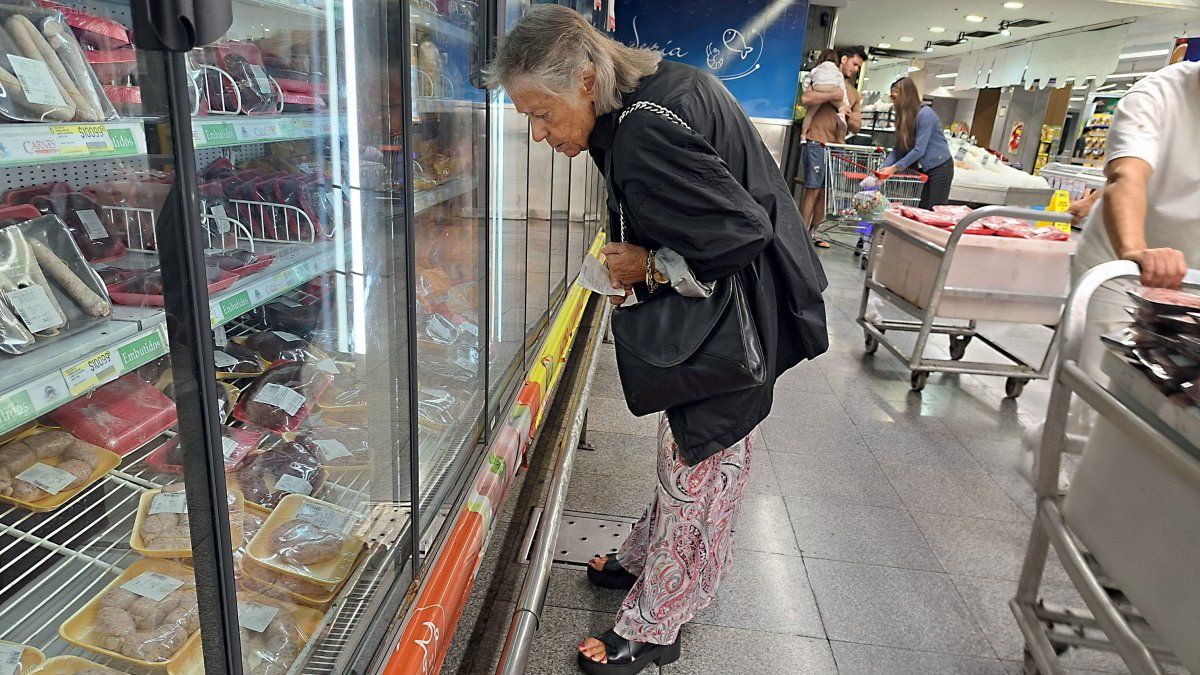The measurement corresponds to Workers Statistics Institute (IET) of the Metropolitan University for Education and Work (UMET) and the Center for Concertación and Development (CCD).
The relieved percentage shows a deceleration of 0.1 percentage points compared to 2.5% in January And it was the lowest since August 2020. “Meanwhile, year -on -year inflation was 69.2%, the lowest record since July 2022,” the report said.
Workers inflation: the most increased items
According to the IET report, The largest item in February was restaurants and hotels, with 3.5%. “This is explained entirely by restaurants and not by hotels, which fell price compared to January, peak month of the high season,” said the report.
The second division of higher increases was Various goods and services (3.3%)followed by Health (3.2%). Likewise, analysts warn that the item Housing climbed 2.9%driven by Rentals and goods and services for maintenance and repair. Non -alcoholic food and drinks also rose 2.9%, In this case promoted by the meat (7.7%).
In contrast, the division of minor increases was home equipment and maintenance (0.5%). This is explained by certain items that registered pricing casualties in February, as appliances (1.9%).
The executive director of the CCD and former Minister of Education, Nicolás Trotta, analyzed some of the conclusions that arise from the report data: “With minimal differences, The monthly inflation rate continues at the same level in the last five months, but nominal wages tend to adjust downexpanding the real losses of all workers, and entering an area again deterioration for retirees and much of the social programs, which are already at critical levels, and that adjust for lag inflation. If the government does not make its income adjustment criteria (wages and retirement), the real economy and society will enter a critical stage. ”
Workers inflation: those of average income, the most affected
This month’s report includes a particular analysis: “Households with Men’s boss experienced higher inflation than with Chief Woman (2.48% against 2.35%).” Besides, Inflation was shaped like inverted according to the income level. It was milder at the ends of the social pyramid and higher in the average segments, where it exceeded 2.5%. “Nominal wages adjust down, expanding workers’ losses and with more deterioration for retirees and much of social programs. If the government does not make its income adjustment criteria (wages and retirement), the real economy and society will enter a critical stage, ”says Trotta.
“A factor behind this (the greatest impact on households with boss) is what happened with meats. Indeed, households with male boss allocate most of their expenses for the consumption of meat (product of rooted cultural habits where meat consumption is remarkably greater in men), ”said the document.
The general coordinator of the IET, Fabián Amico, said: “The February inflation data reveals the stagnation of the disinflation process, despite the reduction of the ‘crawling peg’ rhythm of the official exchange rate since the beginning of February. Part of this result is due to the acceleration of food inflation, mainly driven by the price of meat (which rose more than 7%). However, Even if the price of the food item had increased the same as the previous month, the average inflation would have been similar to January, confirming the stagnation of the inflation reduction process”
In addition, the document reveals that inflation was shaped like “U” invested according to the level of income: “It was milder at the ends of the social pyramid and higher in the average segments. As an example, in decil Lower in the richest decile product of the low -tourism price (hotels and plane tickets), which had touched a peak in January product of the high season. ”
Likewise, the report details that The accumulated inflation since November 2023 is 192.8%. However, there are relevant differences between social groups: it was more intense in retirees (198.7%) and owners (197.3%), and relatively less in tenants (177.4%). “The latter is explained because rentals have risen less than the rest of the goods and services since that date. In contrast, inflation in homes with retiree boss was greater because the prices linked to health and housing services – which affect more in these homes – rose more than the rest,” the report concluded.
Source: Ambito




